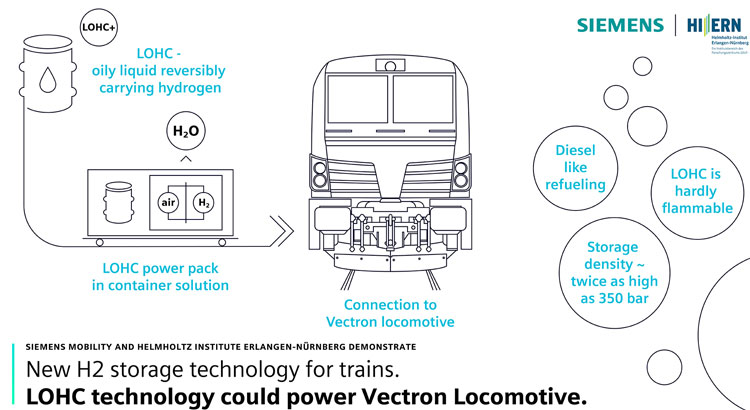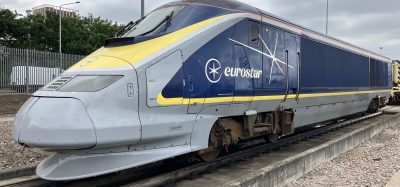Cooperation on the use of LOHC technology in rail transport agreed
Posted: 31 May 2021 | Global Railway Review | No comments yet
Siemens Mobility and the Helmholtz Institute Erlangen-Nuremberg for Renewable Energy have agreed on joint research for the use of Liquid Organic Hydrogen Carrier (LOHC) technology in rail transport.
The use of hydrogen technology in rail transport is becoming increasingly important as a solution for reducing CO2 emissions and helping to meet climate targets.
In recent years, Siemens Mobility has developed a hydrogen-powered train, the Mireo Plus H. In this technology, hydrogen is tanked in gas form and must be kept under high pressure in order to achieve the required high density.
The Helmholtz Institute Erlangen-Nuremberg for Renewable Energy (HI ERN) is a leader in the field of so-called LOHC technology. In this process, an organic carrier liquid absorbs hydrogen and releases it only when needed. The hydrogen is thus chemically bound and can’t escape in a gas form. This way, it can be prepared and stored safely, and transported inexpensively. Storage under high pressure or at low temperatures is no longer necessary. A special advantage of the technology: LOHC is also suitable for the on-board generation of electrical power in mobile applications like trains.
Albrecht Neumann, CEO Rolling Stock at Siemens Mobility, said: “Siemens Mobility is especially pleased to be entering into a partnership with the renowned Helmholtz Institute Erlangen-Nuremberg to develop Liquid Organic Hydrogen Carrier technology in rail transport. Hydrogen technology is a promising solution for making rail transport climate-neutral. And since sustainability has a very high priority for us at Siemens Mobility, we’re providing a Vectron locomotive for testing the LOHC technology.”
Prof. Dr. Peter Wasserscheid, Director at the HI ERN, said: “Siemens Mobility’s interest in the LOHC technology that we’ve decisively developed over the past few years at the Friedrich-Alexander-University Erlangen-Nuremberg and at the HI ERN is an excellent basis for a possible cooperation in the future. We share with Siemens Mobility the vision of developing a hydrogen technology that uses the existing fuel infrastructure to power large vehicles like trains.”
Through the prospect of providing the Helmholtz Institute with a Vectron mainline locomotive from Siemens Mobility, the two partners have the opportunity to work together to demonstrate the feasibility of the LOHC concept.


OUT NOW: The Definitive Guide to Rail’s Digital Future
The rail industry is undergoing a digital revolution, and you need to be ready. We have released our latest market report, “Track Insight: Digitalisation.”
This is not just another report; it’s your comprehensive guide to understanding and leveraging the profound technological shifts reshaping our industry. We move beyond the buzzwords to show you the tangible realities of AI, IoT, and advanced data analytics in rail.
Discover how to:
- Optimise operations and maintenance with real-time insights.
- Enhance passenger services through seamless, high-speed connectivity.
- Leverage technologies like LEO satellites to improve safety and efficiency.
Featuring expert analysis from leaders at Nomad Digital, Lucchini RS, Bentley Systems and more, this is a must-read for any rail professional.
Related organisations
Helmholtz Institute Erlangen-Nuremberg for Renewable Energy (HI ERN), Siemens Mobility







